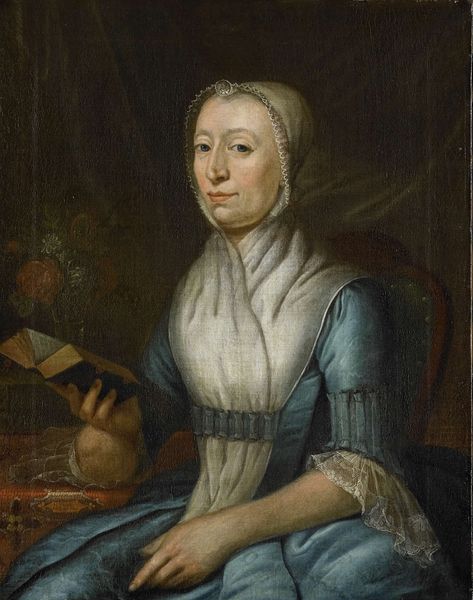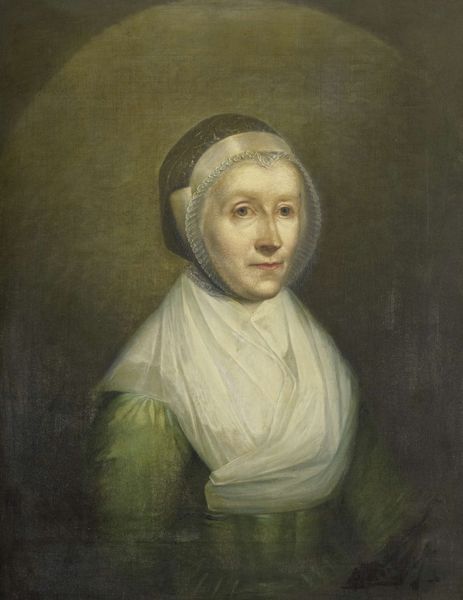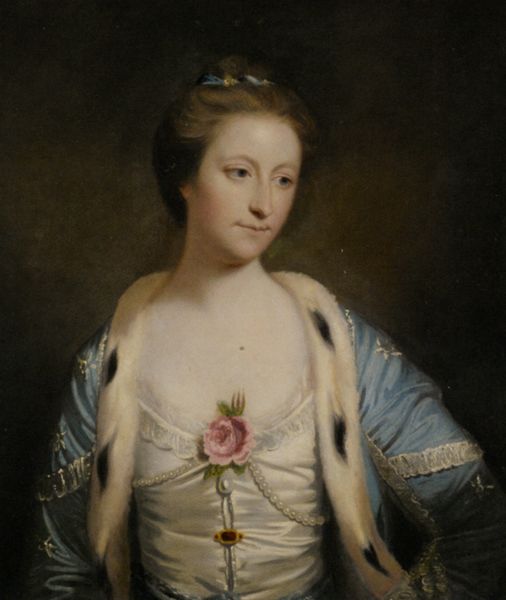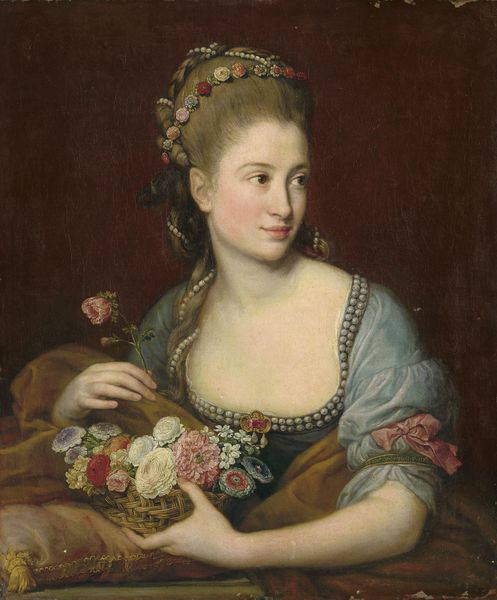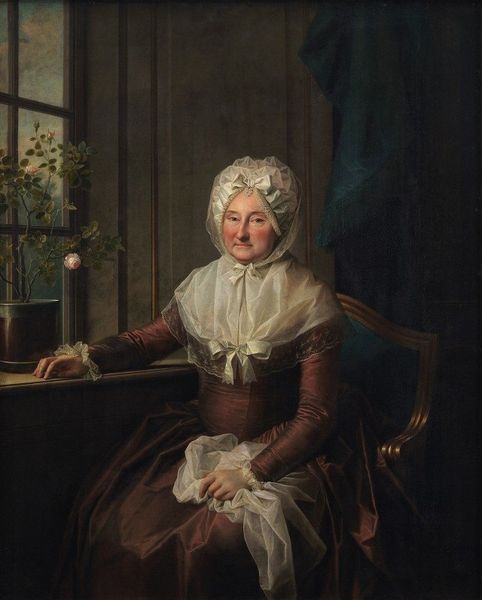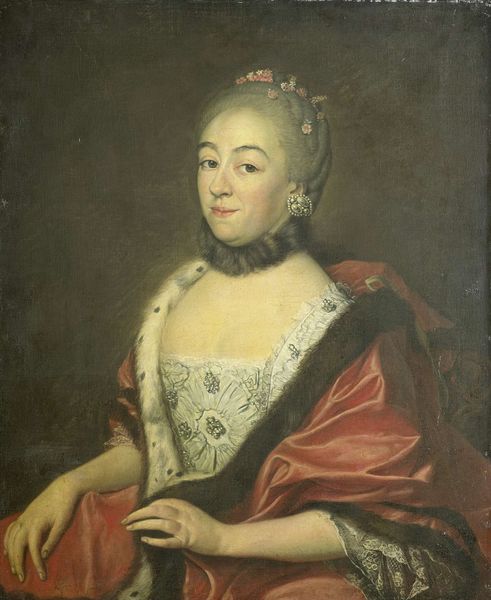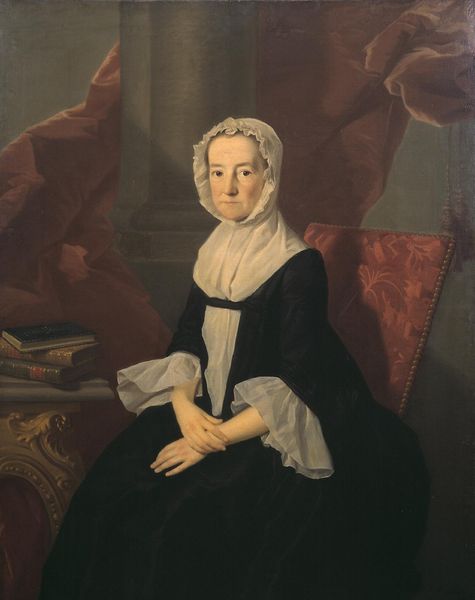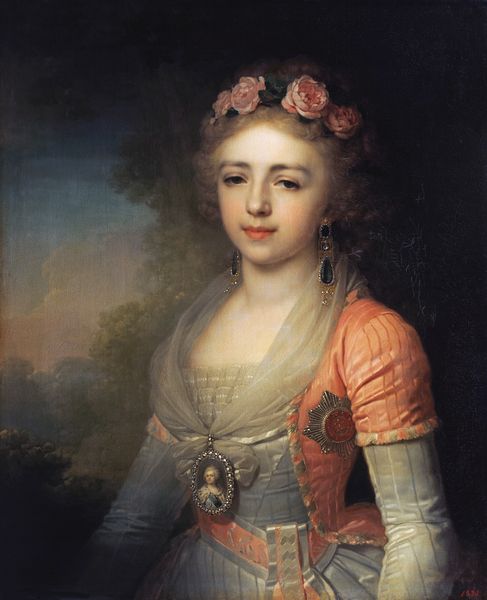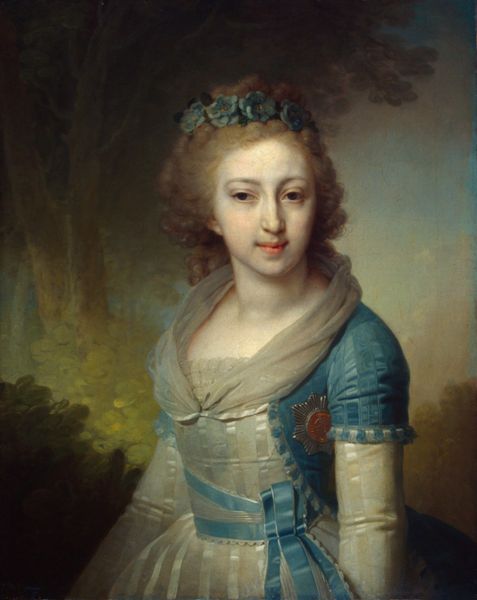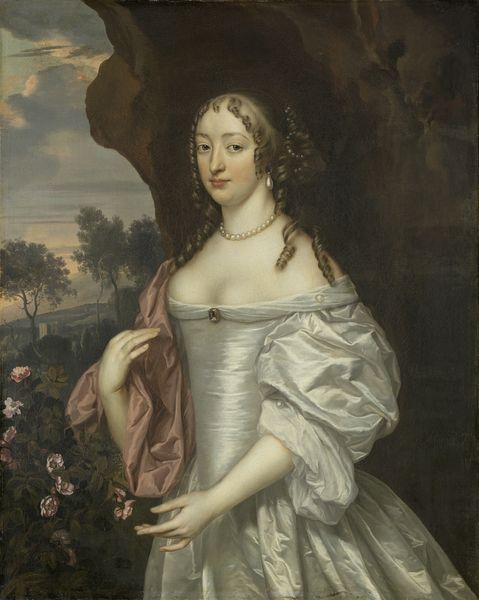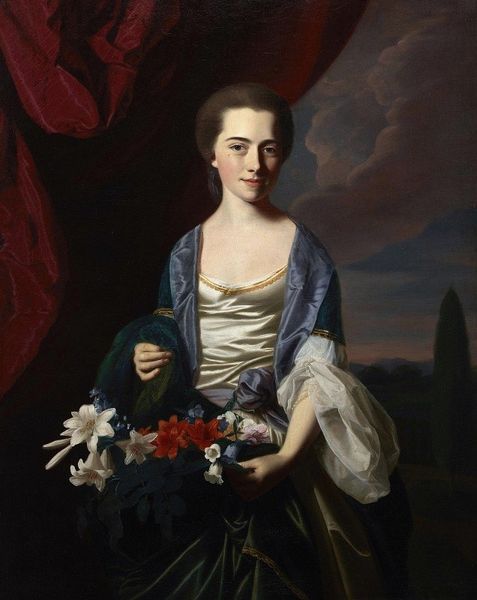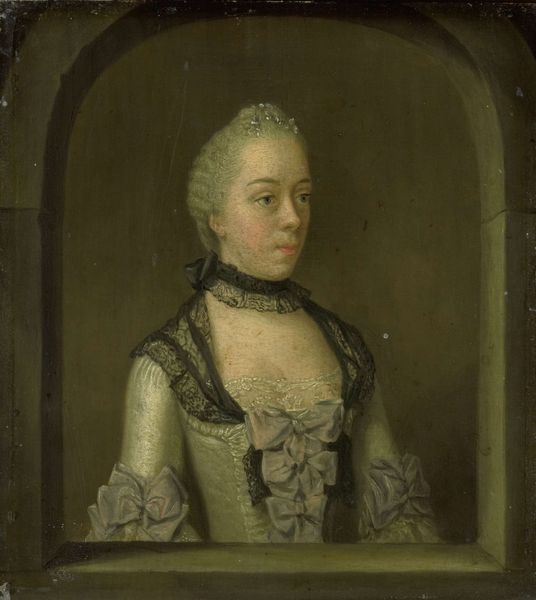
Dimensions: height 60 cm, width 47 cm, depth 5 cm
Copyright: Rijks Museum: Open Domain
Curator: We're looking at an oil on canvas from around 1760. It’s a portrait of Magdalena van Citters, Wife of Adriaen Isaac Hurgronje. Editor: My first impression is tranquility. There's a stillness about her, a quiet confidence in the soft light and pastoral setting. The pale blue dress creates a very pleasing and restful atmosphere. Curator: I would concur. The composition uses the soft colors characteristic of Rococo. I notice the careful construction of the triangular form; the light cascading on her face directs our gaze to the intricate detail in the lace and the bloom of the roses. Semiotics, in this portrait, places importance on conveying wealth and virtue. Editor: And what does this tell us about the historical context? Portraiture in the 18th century served as a form of social currency. To commission and display a painting like this declared a family’s status. The setting—an idealized nature, carefully managed—mirrors the Dutch pursuit of commercial wealth acquired overseas. Curator: Indeed. Her gaze, averted but engaging, seems to consider the viewer—she projects into our space. The texture of the dress, particularly the shimmering effect achieved with layered oil paint, is compelling. It pulls you into the materiality of the painting. Editor: That dress, the table with strewn flowers, are indications of trade and empire. The flowers suggest controlled naturalism, reminiscent of a garden. How do we reconcile such finery with colonial activities funded in that era? Is this painting attempting to sanitize this origin by hiding the human cost of this commercial era? Curator: I view these flowers as representative of beauty and temporality – nature tamed, yes, but still echoing of a wider ecosystem of life. The contrast between the fleeting nature of floral life, contrasted against what may seem as the permanency of a painting is quite an astute way of signaling change through materiality. Editor: Ultimately, a painting invites conversation across time, connecting present and past experiences and the enduring presence of our colonial legacy. Curator: Absolutely. The enduring quality lies in the painterly quality to capture the surface. Editor: Yes. We both bring unique frameworks to decode art’s intrinsic appeal and role.
Comments
No comments
Be the first to comment and join the conversation on the ultimate creative platform.
